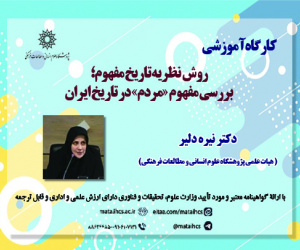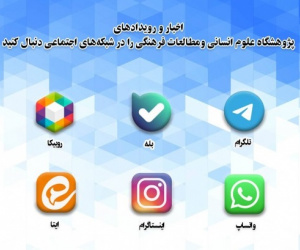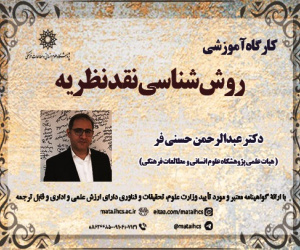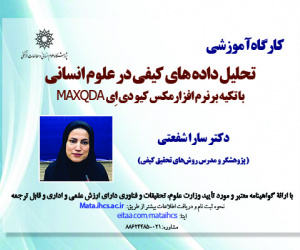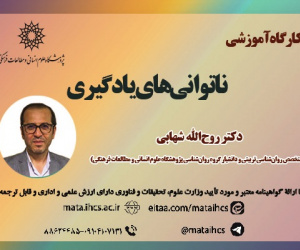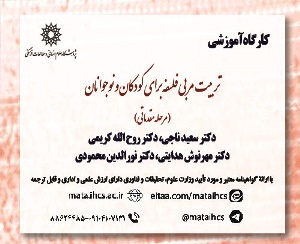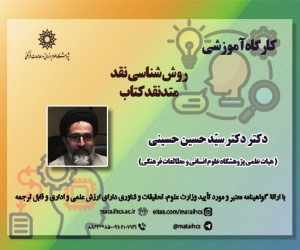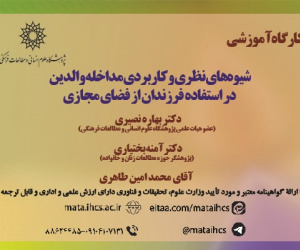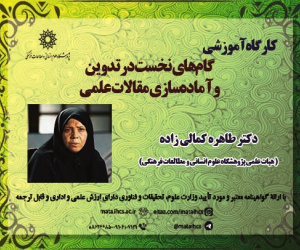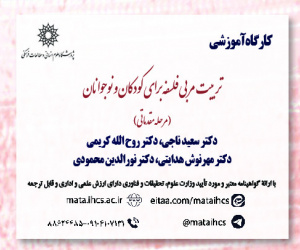تحلیل آسیب شناسی ساختاری و سیمایی سنگ نوشته اورارتویی سقین دل، ورزقان، آذربایجان شرقی، ایران (مقاله علمی وزارت علوم)
درجه علمی: نشریه علمی (وزارت علوم)
آرشیو
چکیده
سنگ نوشته اورارتویی، در روستای سقین دل از بخش مرکزی شهرستان ورزقان در استان آذربایجان شرقی متعلق به دوره فرمانروایی «ساردوری دوم» پادشاه اورارتویی بر سنگی در کوه زاغی، نقر شده است. این سنگ نوشته یکی از آثار منحصربه فرد باقی مانده از دوران گسترش پادشاهی اورارتویی در شرق دریاچه ارومیه است که بیانگر تاریخ فرمان روایی آنان در منطقه است و به دلیل عدم رسیدگی قسمت اعظم آن آسیب دیده و دچار تخریب گشته است. براساس بررسی های انجام شده بر روی سطوح سنگ نوشته، پوششی از انواع گل سنگ ها تقریباً تمام صخره کوه های این منطقه را تحت تأثیر قرارداد است که سنگ بستر سنگ نوشته نیز از این آسیب به دور نمانده است. به علاوه در بدنه و پای سنگ نوشته آسیبی از وندالیسم و حفاری های غیرمجاز نیز دیده می شود که سلامت اثر را با مخاطره روبه رو نموده است. با توجه به این که تاکنون مطالعات علمی و آزمایشگاهی درخصوص بررسی شیوه ساخت اثر، آسیب شناسی سنگ نوشته اورارتویی سقین دل و شناسایی لایه ها و سازوکار تخریب احتمالی بر روی آن ها و هم چنین راه حل حفاظتی برای آن ارائه نگردیده است؛ بنابراین برای رسیدن به این هدف مطالعات آزمایشگاهی، در مورد ساختار و ویژگی های سنگ و همچنین انواع آسیب های وارده به بدنه به شیوه های مختلف انجام گرفت. تا به سؤالات مهم تحقیق شامل: 1. مهم ترین آسیب های موجود در بدنه سنگ نوشته اورارتویی سقین دل چیست؟ 2. چگونه پدیده های موجود ساختاری و اقلیمی و ذاتی و تجمعات زیستی موجب آسیب گشته اند؟ که در این راستا مطالعات میدانی نشان دهنده یک نوع تخریب هم افزا ناشی از مجموعه ای از عوامل ذاتی، اقلیمی، بیولوژیکی و انسانی است که خود را در قالب سیماهای آسیب شکستگی، رسوب سطحی و تجمع زیستی با گونه شاخص گل سنگ بر بدنه نمایان ساخته است.Analyzing the Structural and Visual Pathology of Urartian Inscriptions in Seqindel, Varzeghan, East Azarbaijan, Iran
The Urartian inscriptions, in the village of Seqindel in the central part of Varzghan city in East Azarbaijan province, belonging to the era of Sardori II, the king of Urartu, was inscribed on a stone in Zaghi mountain. This inscription is one of the unique works remaining from the expansion of the Urartian Kingdom in the east of Lake Urmia, which shows the history of their rule in the region, due to the lack of maintenance, most of it has been damaged and destroyed. According to the investigations carried out on the surfaces of the inscriptions, a cover of some kinds of lichens has affected almost all the rocks of the mountains in this region, and the bedrock of the inscriptions has not been spared from this damage. In addition, damage from vandalism and unauthorized digging can be seen in the body and foot of the inscription, which has endangered the health of the work. Because until now scientific and laboratory studies regarding the investigation of the method of making the work, the pathology of Seqindel Urartian inscription, and the identification of layers and possible destruction mechanisms on them, as well as the protection solution for it, have not been provided. To achieve this goal, laboratory studies were conducted on the structure and characteristics of the stone, as well as the types of damage caused to the body in different ways. The important questions of the research include: 1.What are the most serious damages in the body of the Urartian Seqindel inscription? 2.How have existing structural, climatic, and inherent phenomena and biological accumulations caused damage? In this regard, field studies show a type of synergistic destruction caused by a set of intrinsic, climatic, biological, and human factors, which manifests itself in the form of fracture damage, surface sedimentation, and biological accumulation with lichen as an indicator species on the body.
Keywords: Inscription, Seqindel, Urartu, Pathology, Technology.
Introduction
The Urartian inscription of Seqindel is located approximately 2 km from the village of Seqindel, on the slope of Zaghi Mountain. It is situated near an archaeological site encompassing multiple historical periods, including the Bronze, Iron, Urartian, and Islamic eras. This inscription, primarily associated with the military campaign of Sarduri II, an Urartian king, is regarded as one of the significant artifacts of this period. The inscription is carved into a conical rock, measuring 4.5 by 5 meters, and consists of 10 lines of cuneiform text. Based on textual analysis, its age is estimated at approximately 2,750 years (Mashkour, 1953; Ebrahami, 2019; Dara, 2017). In the vicinity, the remains of a pre-Urartian fortress, measuring 245 by 140 meters, are located. Surrounding this fortress are stone walls and quadrangular rooms within its structure (Naseri-Someh, 2019: 310). This fortress has held particular importance across various periods, notably during the Urartian and Islamic eras.
The Seqindel inscription was discovered by Dr. Mohammad-Javad Mashkour in 1951 (1330 in the Iranian calendar), and since then, several studies and documentation efforts have been conducted. These efforts include reproductions, mapping, and assessments of damage to the inscription. In 1968, the inscription was registered as a national monument under number 795, prompting numerous subsequent studies in the fields of pathology and preservation (The Registration Document, 1968). These studies have identified various forms of damage, such as the use of chisels to penetrate behind the stone and the potential use of dynamite to harm the inscription (Klesis and Kroll, 1980). In recent years, initiatives such as copying and creating replicas of the inscription have been undertaken (Bashash, 2007: 5).
This research specifically examines the pathology and degradation processes of the Seqindel inscription, utilizing modern methods to document its current condition and analyze the physical-chemical properties and resistance of the stone. Field and laboratory studies have yielded valuable insights into the damages and present state of the inscription, providing data applicable to future preservation and restoration efforts.
Discussion
The climate of the Varzeqan region, as outlined in the climatology section, has an average temperature of 10.1°C, with summer maxima reaching 33°C and winter minima dropping to -22°C. The region receives an average annual rainfall of 343 mm, with relative humidity ranging from 52% to 82%, and experiences an average of 133 frost days. These characteristics classify the region as a cold climatic zone. Freezing typically occurs in November, December, January, February, and March, with average minimum temperatures of -2°C and maximum temperatures of -9°C (Pour-Asghar, Isfahani, and Akbarzadeh, 2022).
Based on Peltier’s (1950) model, which considers average temperature and annual rainfall as key factors in weathering, seven weathering models were proposed, encompassing chemical weathering, frost activity, erosion, and wind action. The model indicates that the warmest and wettest regions exhibit maximum chemical weathering, whereas the coldest and driest regions experience the least. In areas with very low temperatures, frost activity (physical weathering) predominates, alongside mechanical and chemical weathering processes. According to Nagel’s (2000) review of Peltier’s diagram, the climatic data for Varzeqan suggest that the Seqindel Urartian inscription lies at the boundary between moderate chemical weathering and frost-related weathering, where physical and mechanical weathering are more prominent. This implies that frost damage significantly contributes to the inscription’s degradation (Fig. 24).
The Seqindel stone inscription, with a porosity of 13.3%, likely exhibits increased surface porosity due to prolonged weathering, rendering it vulnerable to freeze-thaw cycles. In cold and dry mountainous regions like Azerbaijan, seasonal and diurnal temperature fluctuations result in a higher frequency of freeze-thaw cycles, causing greater damage compared to moderate or tropical climates. Furthermore, the absorption and retention of moisture in the stone across different seasons heighten its susceptibility to mechanical weathering, amplifying the impact of biological agents and erosion (Paterno, 1999).
Regarding the stone’s structure, surface erosion results from a combination of physical and chemical factors, driven by the expansion and freezing of water within the stone, occasionally compounded by structural or mineralogical weaknesses. Research indicates that minerals such as iron, quartz, and altered hematite contribute to damage, including color changes from iron dissolution, which produce an orange-brown appearance and surface deterioration. The presence of biological agents, such as lichen species, also threatens the inscription’s surface. Although lichens may cause minimal direct harm, their removal can expose the stone to further weathering, particularly if ultraviolet radiation intensifies. The presence of Rusavskia elegans lichens on the stone signals potential preservation needs, as certain lichens may mitigate weathering effects (Dmitrieva et al., 1995; ESA, 2010). Studies on lichens’ resilience in extreme environments suggest that these organisms may serve a protective role against weathering mechanisms.
Conclusion
The preservation issues of the Urartian inscription of Seqindel represent a multifaceted challenge that requires a multidisciplinary approach. Based on field findings, the inscription was handcrafted in several stages, including polishing, groundwork, and text carving. In the damage studies, the main destructive factors identified include human impact, climate, the surrounding environment, and biological pests. The results of physical and chemical tests showed that the environment significantly impacts the cracks caused by freeze-thaw cycles. Based on these findings, it is essential to develop a comprehensive preservation and restoration plan to address the issues. This plan prioritizes measures to prevent the inscription from falling, followed by filling the cracks and fissures caused by human and climatic damage. Finally, lichen removal and covering the inscription with a roof are suggested to reduce weathering and moisture risks, ensuring its long-term survival.
Inscription,Seqindel,Urartu,Pathology,Technology,

